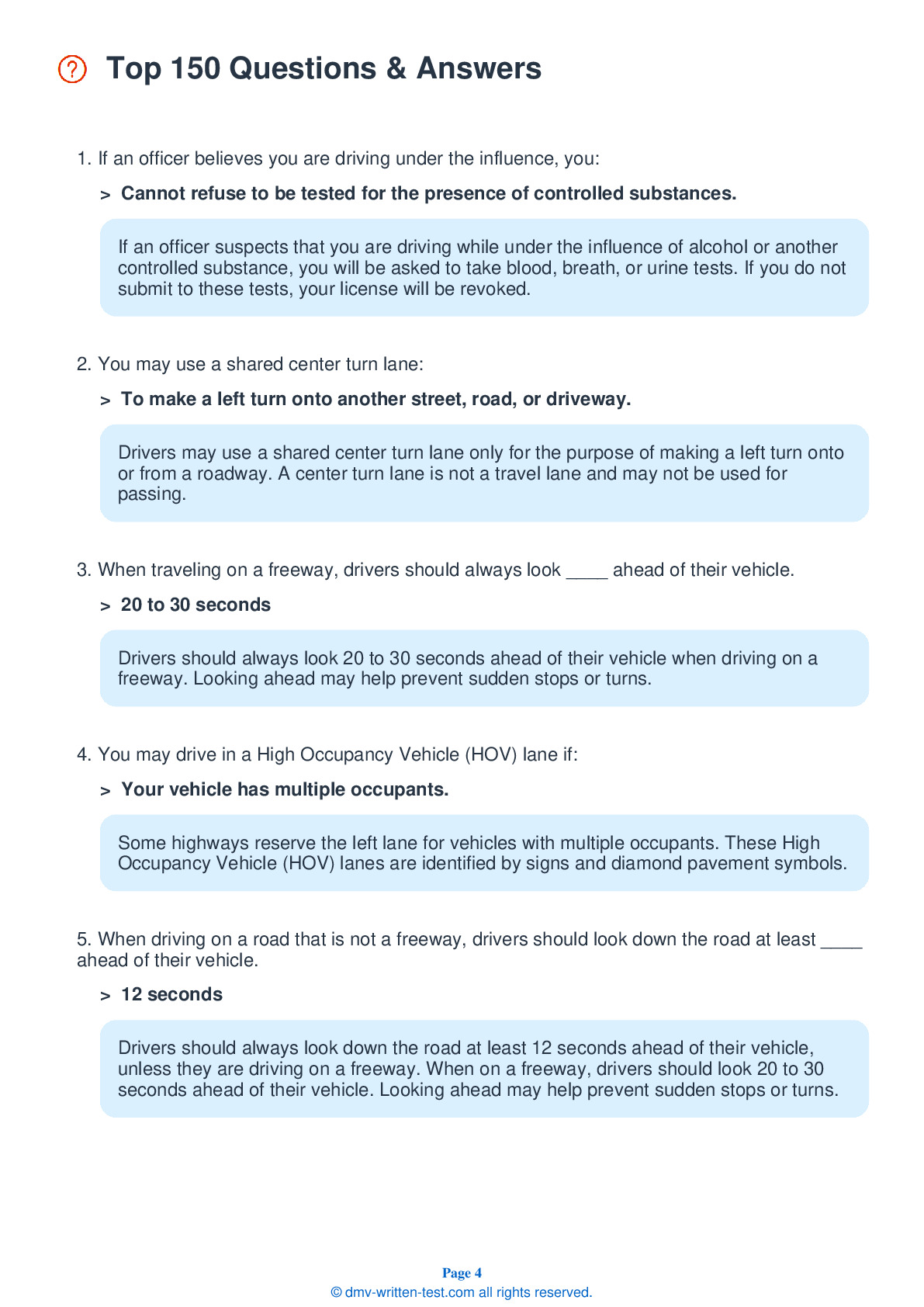2025 Nevada Permit Test 20
The following questions are from real DMV written tests. These are some of the actual permit questions you will face in Nevada. Each permit practice test question has three answer choices. Select one answer for each question and select "grade this section." You can find this button at the bottom of the drivers license quiz. For a complete list of questions and answers for Nevada please visit https://cheat-sheets.dmv-written-test.com/en/nevada/car.
Number of Tests
Number of Question
Passing Score
43. When driving near heavy trucks, other drivers and highway users must make allowances for:
Explanation
When driving near heavy trucks, other drivers and highway users must make allowances for the increased stopping distance required by the large vehicles. Drivers of smaller vehicles should remain in locations where they can be seen by the driver of the large vehicle and where their view of traffic is not blocked by the vehicle.
44. Before changing lanes on a multilane highway, you should:
Explanation
Before changing lanes, you should look in your rearview and side mirrors to make sure no one is trying to pass you. You should also look over your shoulder to make sure that no one is in your blind spot.
45. If you are stopped by a police officer, you should:
Explanation
If you are stopped by the police, keep your hands on the wheel and ask any passengers to keep their hands in view as well. You should remain in the vehicle unless the police officer asks you to get out. Wait until the officer asks you to retrieve your driver license, registration, and insurance cards.
46. You should be cautious when passing a bicycle because:
Explanation
You should always be cautious when passing a bicycle because the cyclist may have to swerve into traffic to avoid an object on the road. Always be particularly careful when driving near bicyclists.
47. This road sign means:

Explanation
This sign warns that the overpass ahead has a low clearance. Do not proceed if your vehicle is taller than the height indicated (in this case, 13 feet, 6 inches).
48. Downward-facing triangular signs:
Explanation
Downward-facing triangular signs usually indicate that drivers should yield. Once the road is clear of traffic or pedestrians and it is safe to do so, drivers may proceed.
49. If you need to drive in foggy weather:
Explanation
You are required to use your headlights during the day when visibility is reduced to 500 feet or less. When you first turn on your headlights, be sure they are adjusted to the low beam setting. Using high beams in fog or rain will cause the light to reflect back into your eyes, lowering visibility even more.
50. When driving on slick roads, you should:
Explanation




